Research infrastructures at INRAE
Environment
ICOS

ICOS (Integrated Carbon Observation system) is a distributed European research infrastructure of organised networks of measurement stations that measure the life cycle of greenhouse gases in the atmosphere and terrestrial and marine ecosystems. ICOS is specifically focused on measuring the fluxes and concentrations of carbon dioxide (ecosystems, fossil fuels and cement works), methane (natural gas, agriculture and livestock), and nitrous oxide (agriculture, fossil fuels and fires) generated from 2016 to 2035.
It is organised on a European level and has 130 stations in three different networks: the ICOS Ecosystem Network, the ICOS Ocean Network and the ICOS Atmosphere Network.
ICOS France, the French entity of ICOS Europe, is a national, multi-partner infrastructure with three founding members – CEA, CNRS and INRAE (which is currently coordinating the IR) – and various other contributors, namely academic. ICOS France has 19 ecosystem stations, 11 atmosphere stations and one ocean station.
INRAE-ICOS is specifically dedicated to terrestrial ecosystems and mainly focuses on
- the long-term trajectory of carbon biogeochemistry in agricultural ecosystems and forests, and
- the impact of management practices and environmental factors on GHGs on land surfaces at different temporal and spatial scales.
INRAE-ICOS plays a central role in the network of ICOS Ecosystem stations, which monitor the carbon metabolism of soils and vegetation, as well as the primary producer functioning in terrestrial ecosystems. These data play a strategic role in the rapid environmental changes in anthropised ecosystems (agriculture and forestry).
ICOS is a “Landmark” for the European Strategy Forum on Research Infrastructures (ESFRI) Roadmap and is a very large-scale research facility (TGIR) as part of the French national research strategy.
LIFE RI
The LIFE RI (Living In Freshwaters and Estuaries) is a distributed infrastructure coordinated by INRAE. Its aim is to provide expertise, tools, data and resources to a large scientific community to support the study, management and conservation of biodiversity in inland aquatic environments. As global and local environmental changes continue to multiply (overexploitation, water pollution, habitat degradation, flow modification, invasive species etc.), LIFE works to identify the respective and interactive roles of various anthropic pressures (local and global) that impact biodiversity in order to inform the decisions of population and environmental managers and to support acceptance by society. The targeted environments are both bodies of water (lakes and ponds) and watercourses (from headwaters to estuaries). LIFE provides services and expertise on fish as well as the entire biocoenosis: microbial communities, plants (micro/macrophytes), zooplankton and invertebrates.
The LIFE RI comprises four entities: U3E, ECP, OLA, EABX. LIFE is a part of the French national AnaEE RI and the European RI AQUACOSM.
LIFE has received funding from the Investments for the Future programme via AnaEE.
AnaEE
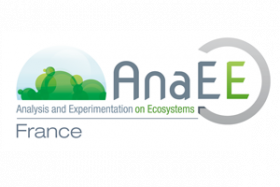
The AnaEE France infrastructure (Analysis and Experimentation on Ecosystems), led by the CNRS, INRAE and the University of Grenoble Alpes, provides a set of services dedicated to experimentation for the study of terrestrial and aquatic continental ecosystems. Its facilities allow researchers to manipulate ecosystems in order to characterise the environment and provide access to modelling platforms.
The AnaEE-INRAE entity encompasses components for long-term experiments in nature – U3E (LIFE) – as well as a dozen well-equipped and coordinated sites from three networks, the ACBB, PRO and GIP ECOFOR forest sites.
To enhance its environmental observation capacities, AnaEE-France offers analytical platforms and mobile instruments that can be deployed in the field within INRAE: BiochemEnv, Genosol and mobile platforms. To promote the reuse of data, it is committed to providing open access to data produced by the infrastructure based on the FAIR principles as well as supporting the exploitation of these data by coupling them with modelling platforms.
AnaEE-France offers a unique and standardised point of access to services and works to harmonise and standardise methods, measurements and metadata.
The AnaEE-France entities are members of AnaEE Europe. AnaEE has received funding from the Investments for the Future programme.
IN-SYLVA
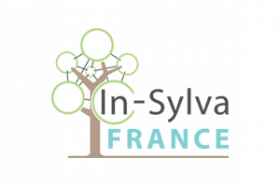
IN-SYLVA-France (Adaptive Forest Management) is part of the French national infrastructure roadmap and is coordinated by INRAE, in partnership with five other research, development and forest management organisations: CIRAD, CNPF, FCBA, ONCFS, ONF.
This distributed research infrastructure explores the adaptation of forests to global change and innovations in forest management. It promotes a comprehensive management vision for managed forests to address ecological and energy transition issues by taking into account ecosystem diversity. It has an original approach combining forestry, biogeochemical, genetic and economic methods. This research infrastructure conducts in-situ forest experiments supported by lab and in-silico technologies. IN-SYLVA has the necessary experimental facilities for large-scale phenotyping; analytical platforms for functional ecology, biogeochemistry, xylosciences and genetics to carry out high-throughput sample measurements; and information and analytical systems for data processing. IN-SYLVA-INRAE consolidates INRAE’s assets (observation and experimental facilities, mobile platforms, phenotyping platform) under the IN-SYLVA France umbrella.
IN-SYLVA supports research projects on sustainable forest management through the development of a web portal providing access to these services and to distributed resources via a charter. It promotes academic and continuing education on sustainable forest management. Through its many activities, the RI also works with the ICOS, AnaEE, Phenome-Emphasis and Rare RIs.
OZCAR and RZA
OZCAR and RZA are research infrastructures dedicated to the observation of critical zones and drainage basins. They are coordinated by the CNRS INSU and the CNRS InEE, respectively. Together, the two RIs make up the French entity for the ESFRI eLTER project. Some of these distributed infrastructures’ sites also support the Advance_eLTER European infrastructure. These distributed infrastructures aim to provide a broad range of observational data on biodiversity, biogeochemistry and hydrology from natural sites across France, along with occasional characterisations of anthropic activities (RZA).
While INRAE has not yet certified the “natural observation infrastructures”, the institution is an important player in the Zones Ateliers network (seven ZAs) and is involved as a partner in nine universe observatories (which contribute in different ways to the OZCAR RI. INRAE’s positioning in these RIs and associated organisations will evolve with the consolidation of the next French national roadmap due out in 2020.
Theia and PNDB, Dinamis

Data terra, a national data infrastructure for Earth system science, has four divisions: Odatis, Aeris, Form@ter and Theia. INRAE researchers are involved in managing Theia, and various types of INRAE data help support Data Terra. INRAE works with 14 other partners on Dinamis (formerly Equipex GeoSud), the jointly operated national satellite imaging centre which will gradually centralise access to high and very high-resolution satellite imagery of space for many non-commercial users in France. Dinamis is a multidisciplinary service of the Data Terra RI. INRAE plans to maintain operational competencies in remote sensing and means of production for products and services based on space data through research on soils, water management, terrestrial hydrology and hydraulics, the dynamics of forest ecosystems and agroecosystems within a context of global change and agroecology, biodiversity, habitats and landscapes, digital agriculture and more.
INRAE’s biodiversity data will also support the French national biodiversity data division.
The certified association of INRAE with these infrastructures is under discussion.
Resources, agricultural sciences, phenotyping
RARe
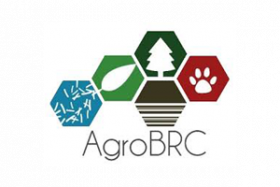
RARe (INRAE networks of Agricultural and Environmental Biological Resources Centers) is a national distributed multi-entity infrastructure that works to protect and characterise biological and genetic resources of animal and plant species, microorganisms and the environment to support agricultural transitions in response to global change. RARe is coordinated by INRAE in partnership with CIRAD and IRD. RARe has a twofold objective: (i) to manage and conserve its collections by making them accessible to the international scientific community and relevant sectors, and (ii) to develop a platform for exploring biodiversity for research and innovation purposes.
It has five pillars connecting various biological resource centres (33 BRCs, 29 of which led by INRAE and 21 of which are IBISA certified), which safeguard genetic, genomic and biological resources that are assembled and characterised by research stakeholders in five different fields:
- domestic animal species (livestock and pets): a wide range of tissues from mammals, birds, fish and shellfish (20 species) used for research on animal breeding and biomedical models (RARe Animal Pillar). The CRB-Anim has received funding from the Investments for the Future programme.
- plant genetic resources: model or cultivated plants (50 genera) to protect their diversity and develop new varieties to adapt to new environmental conditions, crop management sequences and economic priorities (RARe Plant Pillar and CNRGV).
- forest trees: collections of standing trees, tissue or DNA samples, and cell cultures of seven species each of hardwoods and softwoods (RARe Forest Pillar).
- microorganisms: plant-associated and pathogenic bacteria, yeasts and filamentous fungi, and microorganisms of agricultural or agri-food interest (RARe Microorganism Pillar, which includes the CIRM network. This network is part of an ESFRI MIRRI project).
- biological and/or genomic environmental resources: samples of soils, sediments, waters, and microbial consortia from cultivated or natural ecosystems, and as well as animal and plant resources that are useful for environmental research (RARe Environment Pillar).
Phenome-Emphasis
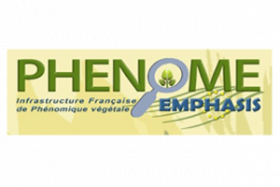
Phenome-Emphasis is a national infrastructure coordinated by INRAE. It is the French arm of the European ESFRI project Emphasis and the EPPN2020 integrated infrastructure. INRAE is the main academic contributor to this RI, which provides the scientific community with a high-throughput plant phenotyping infrastructure and a series of methods to characterise panels of genotypes from various species (major agricultural species) based on various environmental scenarios associated with global change, with sufficient capacities for genetic analysis.
It has 11 facilities on nine different sites across France and two national methodological programmes:
- 4 platforms in controlled conditions for detailed analysis of root or leaf systems in a range of climate scenarios with contrasting biotic pressures, with a capacity of up to 2400 plants per experiment;
- 2 highly-equipped platforms in the field with rain shelters and a CO2 enrichment system, with a capacity of around 800 microparcels;
- 3 fields equipped for high-throughput genetic analysis in natural conditions, with a capacity of thousands of microparcels;
- 2 omics platforms that can perform metabolite and structural analyses with a capacity that is compatible with the other platforms.
The national methodological programmes are working to develop 3D and functional imaging tools for plants in controlled and covered field conditions (robots in greenhouses, phenomobiles and drones). An information system shared by the entire infrastructure was developed and deployed across the various sites. Image analysis and modelling tools as well as statistical applications are interfaced with the information system.
The RI develops projects in conjunction with private seed companies in France to develop methods and techniques associated with the infrastructure. The Phenome-Emphasis RI has received financing as part of the Investments for the Future programme until 2024.
EMERG’IN
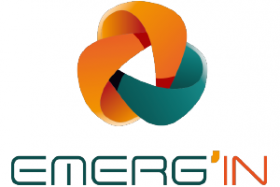
INRAE is the leading contributor and the coordinator of EMERG’IN, the national distributed research infrastructure that conducts research on emerging infectious animal and zoonotic diseases through in vivo experiments.
Within INRAE, EMERG’INRAE comprises three complex systems institutes and experimental platforms for experiments on animals of all sizes in a confined environment, with facilities certified for work on level 2 and 3 pathogens as well as an analytical platform specialised in veterinary anatomical pathology. It provides the scientific community and private partners with the following services:
- Protocol development and implementation assistance (regulatory documents);
- Animal production (models, farms) with controlled health status (specific pathogen-free, germ-free (rodents, quails, chickens) and gnotobiotic, etc.);
- A large range of pathogens and the relevant expertise of infectious disease researchers;
- Carrying out of experimental protocols on animals, including on wild animals in optimal safety conditions;
- In vivo imaging of infectious processes;
- Analysis of results and samples by specialists in infectious diseases, imaging and anatomical pathology;
- Storage of data collected and assistance exploiting the results if needed.
EMERG’INRAE plans to develop further partnerships in the field of precision veterinary medicine (e.g., sensors, telemetry). EMERG’INRAE conducts experiments to evaluate innovative vaccines; develops diagnostic kits, predictive markers, new antibacterial treatments, food supplements that modulate immune responses or with a direct effect on pathogens; and studies the effect of microbiota modulation on the development of infectious diseases and more.
EMERG’INRAE maintains close ties with the European integrated infrastructure projects VetBioNet and Aquaexel, both coordinated by INRAE.
LiPh4SAS

The LiPh4SAS infrastructure (Livestock Phenotyping for Sustainable Agro ecoSystems) provides phenotyping services for farmed animals (cattle, small ruminants, pigs and fish).
As livestock farming adapts to global change and public concern for animal welfare grows, LiPh4SAS facilitates the collection of data and samples for research purposes to support the transition towards more sustainable agroecological livestock production systems that respect animal welfare.
The infrastructure is formed of 10 experimental organisations that keep livestock, of which six are members of French-coordinated European networks (AQUAEXCEL, SmartCow, PigWeb). It also includes a platform for functional investigations using imaging techniques (PIXANIM) and a structure for the processing of all the data produced (Sicpa).
Experimental activities range from detailed studies of biological functions based on a small number of animals (vertical phenotyping) to non-invasive measurements taken from larger numbers of animals (horizontal phenotyping). LiPh4SAS makes it possible to work with animals whose health, genetic and physiological status has been characterised very precisely. The animals come either from commercial stock or original bloodlines, making it possible to study individual biological functions. Measurements are taken under different farming conditions in order to take account of the co-adaptation that occurs between animals and their surroundings. Protocols are created and performed in a way that is strictly respectful of animal welfare and of the regulations on animal experimentation, paying particular attention to the three Rs rule (reduce, refine, replace). This infrastructure’s mission also includes support for technological innovation, in particular for the development of non-invasive methods, alternatives to animal experiments, training and technology transfer.
LiPh4SAS is included in the 2021 national research infrastructure roadmap with the RI label.
Food bioeconomy
PROBE
PROBE (Platform for Profiling properties of food and biobased products) is a distributed RI that provides integrated services for research on the structure, properties and functionalities (including sensory-based characteristics in the case of food of raw materials, products undergoing processing and finished products.
Various physical and chemical methods are used at different scales to identify the impact of structural determinants (composition, architecture) on the quality, properties and functionalities of products, whether for food (e.g., wine, chocolate) or non-food use (e.g., agromolecules and agromaterials from biomass). PROBE draws on the expertise of four IBISA-certified platforms with highly complementary competencies in terms of the molecules studied and their approaches, as well as with regard to the “molecule/supramolecular organisation/organ/tissue/product” continuum.
- BIBS: structural characterisation of biopolymers (polysaccharides, lipids, proteins) in biological systems (plants, plant organs, cells, etc.) or synthetic systems and models (food and food matrices).
- ChemoSens: physical, chemical and organoleptic characterisation of food, analysis of lipids in food and in neurosensory tissues.
- PFP: characterisation of polyphenols in fruit, vegetables, food, and processed products.
- AgroResonance: NMR and MRI platform for agri-food, plant, nutrition and health research.
CALIS
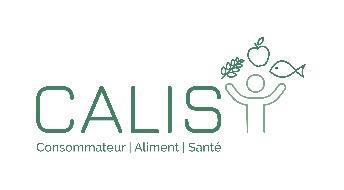
CALIS (Consumers/Food/Health; Consommateur/ Alimentation/Santé) is characterised by considerable interdisciplinarity (nutrition, clinical medicine, food sciences, economics, etc.). It enables the development of integrated and multi-scale approaches, ranging from the design of foods to the evaluation of their health impacts, analysis of the conditions for their adoption by consumers and assessments of their environmental impacts.
The aim is to respond to the challenges of a healthy, well-balanced and sustainable diet that is a source of pleasure, a vector for social and cultural values and accessible to all.
CALIS is organised in three clusters:
- The Food Cluster focuses on the design and characterisation of foods, and groups (i) technology platforms, such as the Dairy Platform (PFL) at the Joint Research Unit for the Science and Technology of Milk and Eggs (STLO) and the Plant Processing Platform (PLANET); (ii) platforms for structural characterisation based within the PROBE Research Institute (accredited by INRAE) and (iii) in vitro digestion platforms.
- The Consumer Cluster is dedicated to studying dietary choices and consumer behaviours. This involves three types of facility: (i) the Odalim e-platform for multi-criteria databases on consumption and food products; (ii) an experimental platform focused on analysing consumer choices and levers for changes to dietary behaviours: Joint Research Laboratory for Applied Economics - Grenoble (GAEL) and the Centre for Taste and Feeding Behaviour – Dijon (CSGA), and (iii) the Nutrinet-Santé consumer panel that enables the study of food consumption in a very large sample of French consumers.
- The Health Cluster, which targets the effects of diet on human physiology and health. This cluster mainly involves: (i) the national network of four Centres for Research in Human Nutrition (CRNH): Auvergne, Ile de France, Ouest, Rhône-Alpes; (ii) Métagénopolis, an industrial biotechnology catalyst specialised in metagenomics to investigate the microbiota.
Functional interfaces between CALIS and other infrastructures such as F-CRIN, RARe, MetaboHub, Cohorts, France Génomique and the French Institute of Bioinformatics (Institut Français de Bioinformatique; IFB) are planned.
CALIS brings together 29 French institutions that include research organisations, a national agency, universities, engineering schools and hospital centres.
CALIS also aims to develop a presence that is unique in Europe through its participation in the European Food, Nutrition and Health Research Infrastructure (FNHRI) that is currently under construction.
CALIS is included in the 2021 national research infrastructure roadmap with the RI label.
IBiSBA

The IBISBA RI (Industrial Biotechnology Innovation and Synthetic Biology Acceleration) conceives and develops biological catalysts (enzymes and microorganisms) and corresponding bioproduction processes to come up with innovative, sustainable solutions to industrial and societal challenges related to the bioeconomy. The aim is to identify, produce and assemble technologies that enable the use of elements of the living world to (i) develop original manufacturing processes, (ii) create products with performances that are difficult or impossible to achieve through usual production methods, and (iii) anticipate the implementation of strict regulations, particularly with regard to the environment. To do this, IBISBA relies on a network of academic research partners who are experts in their fields, cutting-edge technological platforms, and industrial partners in order to develop innovative and sustainable production paths through to the pre-industrial stage.
IBISBA services aim to overcome the biological and technological barriers to this type of development with a view to speeding up the exploitation of scientific and technological knowledge in industrial products and processes while facilitating interfacing between public and industrial research. IBISBA’s original concept is organised at the national level (as a national RI coordinated by INRAE with INSA and CEA) and at the European level as an ESFRI project (14 partners and nine European countries) and an integrated infrastructure. INRAE coordinates all of these entities and projects.
Within INRAE, IBISBA-INRAE houses the pre-industrial TWB demonstrator, which was financed by the Investments for the Future programme, and the Engineering and Screening for Original Enzymes (ICEO) platform, which is part of the Integrated Screening Platform of Toulouse (PICT).
IBISBA Policy Brief 2020 (EN).pdf pdf - 106.79 KB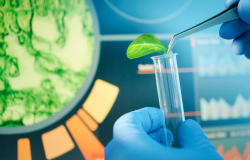
Working through its national nodes present in a large number of European countries, the broader objective is to intensify the development of EU biotech, thereby furthering the global transition to a circular bioeconomy. France’s national node, IBISBA-France, operates under the aegis of the French Ministry of Higher Education and Research. The node is led by INRAE and is composed of teams from CEA, CNRS, INSA Toulouse, the University of Nantes, and the University of Aix-Marseille.
The “OMICS”
Genomics RI

This RI provides the public and private scientific communities and socioeconomic players with the highest level of expertise and competencies in the production and analysis of genomic data and project support. The complex systems institutes and sites of INRAE Genomics are all part of the primary or secondary circle of the national France Genomics infrastructure, and they are actively involved in it. To support the national RI at the INRAE level, the Genomics RI has a distributed organisational structure to consolidate and pool the resources of four INRAE genomics platforms: GeT (Toulouse), Gentyane (Clermont-Ferrand), PGTB (Bordeaux), EPGV (Evry).
The INRAE Genomics platforms offer an array of services for agricultural, plant and animal research, as well as for the sectors of the environment, agrifood, health, pharmacy and biotechnologies, through five complementary fields of application: de novo genome sequencing, genetic polymorphism, expression, expression regulation, and metagenomics.
The INRAE Genomics platforms are part of a regional ecosystem in which the four platforms enjoy strong visibility:
- GeT is a platform of the GIS Genotoul;
- Gentyane is part of a network of 30 platforms and technical platforms at the University of Clermont Auvergne, and as such is a member of UCA Partner;
- PGTB is one of the platforms from the University of Bordeaux network;
- EPGV is hosted within Genoscope, a national sequencing platform located in Evry;
The RI maintains strong ties with the BioinfOmics RI, especially through the ISC Genotoul Bioinfo.
France Genomics has received funding from the Investments for the Future programme.
BioinfOmics
BioinfOmics (Bioinformatics for Omics) is a key payer within the Institut Français de Bioinformatique (IFB) national RI. One of its main objectives is to tackle bioinformatics challenges in the fields of agriculture, food and the environment for a wide variety of animal, plant and microorganism species. BioinfOmics is a distributed organisation that addresses the bioinformatics needs in the life sciences in the age of big data and open science. It unites and coordinates the services offered by four INRAE platforms with (bio)informatics and (bio)statistics expertise: PF-URG, MIGALE, GenoToul-Bioinfo and Sigenae. These platforms are partners of the national IFB research infrastructure which pools, supports and coordinates the development of research resources and support activities for bioinformatics platforms that depend on public research agencies.
The services BioinfOmics provides include:
- Hosting of user accounts/projects via a dedicated data computing and storage infrastructure, software, generalist and specialist data banks, and user support.
- The development and deployment of innovative resources such as software, data banks and information systems.
- Assistance exploiting “omics” data for various genomics and metagenomics applications, based on data from sequencing (assembly and annotation of (meta)genomes, data analysis sRNA-seq, de novo RNA-seq, methyl-seq, etc.), data integration services using statistical approaches and or interoperable environments.
- Dissemination of bioinformatics knowledge through learning cycles, mentoring, consulting and user support.
BioinfOmics has received funding from the Investments for the Future programme via IFB.
MetaboHUB
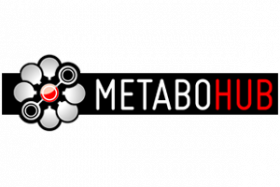
MetaboHUB (INRAE RI in metabolomics & fluxomics) is a national infrastructure for metabolomics and fluxomics created in 2013 and coordinated by INRAE, the RI’s leading contributor. MetaboHUB provides state-of-the-art tools and services to academic research teams and industrial partners in the fields of health, nutrition, agrifood and biotechnology.
MetaboHUB-INRAE brings together complementary analytical tools (equipment, analytical techniques, software) and the expertise of three platforms – PMB-Metabolome Bordeaux, PFEM in Clermont-Ferrand, and MetaToul in Toulouse – as well as the Métabolome IDF platform, coordinated by CEA.
A single portal (MAMA) provides access to MetaboHUB services: analysis of various biological matrices (plants, microorganisms, human cells, animal tissues and biofluids) using metabolomics and fluxomics, as well as project management, from sample preparation to data collection, processing and interpretation.
MetaboHUB is a key metabolomics and fluxomics partner at the European and worldwide levels: it is a partner of the European e-infrastructure PhenoMeNal, participates in IBISBA 1.0 for the development of biotechnoloy in industry, contributes metabolomics data to the ELIXIR infrastructure, and is a founding partner of the European Metabolomics Training Coordination Group (EmTraG).
MetaboHUB has received funding from the Investments for the Future programme.
